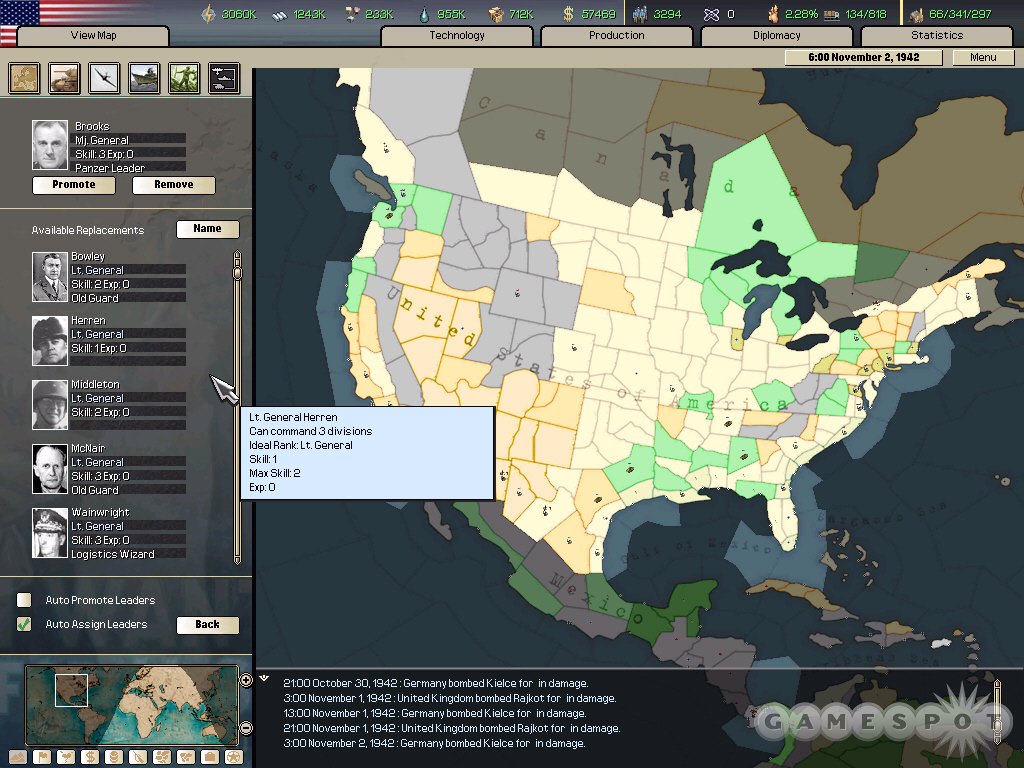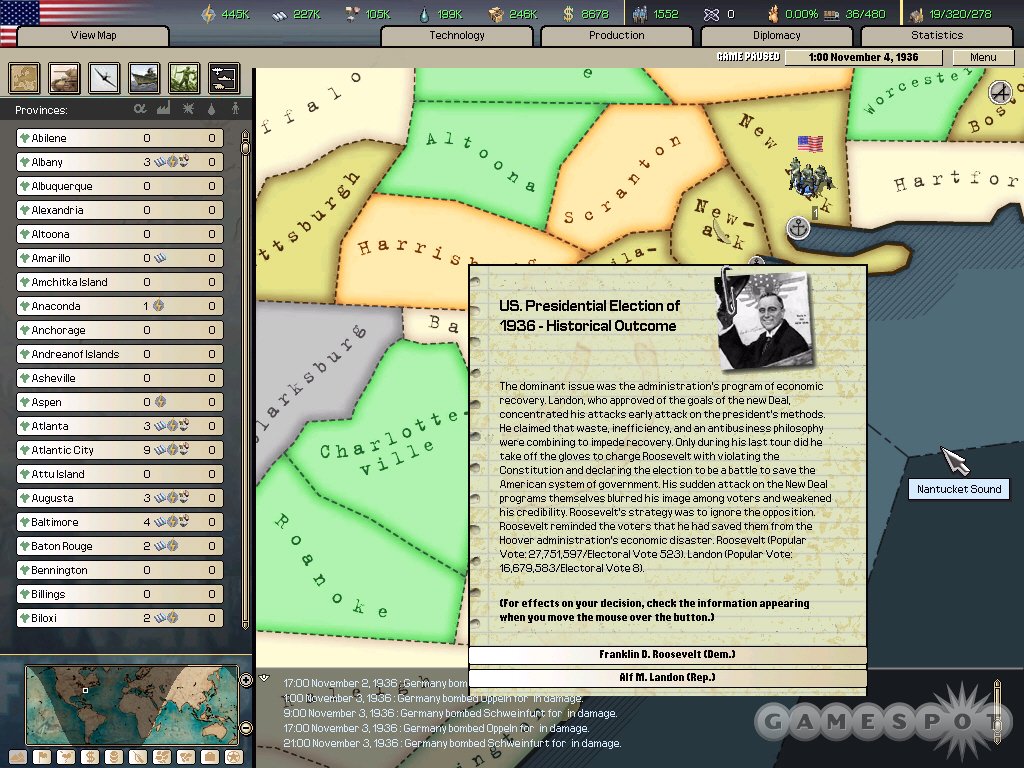Hearts of Iron 2 Hands-On
This sequel features more of the vast, strategic gameplay of the original, along with an improved interface and presentation.
Hearts of Iron 2, as its name suggests, is the sequel to 2002's sprawling World War II strategy game from developer Paradox Entertainment, the same company responsible for the Europa Universalis games. In many ways, Hearts of Iron was a World War II adaptation of the highly flexible Europa Universalis engine, only instead of steering a single European nation from the 1400s to the 1700s, in Hearts of Iron you could take control of any number of the combatants involved in World War II. The original Hearts of Iron received good marks for its depth, but it also suffered from the complexity inherent in the Europa Universalis engine. With Hearts of Iron 2, Paradox is looking to enhance the gameplay, but also make it a bit more streamlined for gamers.

In theory, Hearts of Iron is a division-level strategy game, in that the typical land unit that you'll command is a division. However, don't mistake Hearts of Iron 2 for an operational-level wargame, because it focuses on a much larger picture than individual battles. As in the original game, the goal in Hearts of Iron 2 is to take command of any nation or a faction, such as the Allies, and control virtually every aspect of that entity, including research, production, economics, and more.
Paradox bills the gameplay as being highly interconnected, and that's no exaggeration. For example, you must research new technologies and military doctrines to gain access to new and better vehicles and equipment. Once you have the plans for a next-generation carrier done, you can build it, provided that your nation has access to enough resources and labor. And, of course, carriers aren't built overnight--it takes approximately a year to construct one, so you must plan ahead accordingly and commission production well in advance. In the meantime, you'll play a diplomatic game with other nations to procure resources or assistance. And if you research a new technology, you can allocate resources to upgrade existing equipment. Or you can boost your production rate by investing in infrastructure and factories in your territories. The list goes on and on, and virtually every decision you make, no matter how small, can have repercussions later on.
The game will ship with a number of scenarios that will task you with everything from trying to earn the most victory points by a certain date to achieving key objectives. These scenarios vary in size, ranging from the Ardennes offensive on the western front in 1944 to waging the entire war, starting in the build-up phase in the 1930s. We played as the United States in one of the game's bigger campaigns. The scenario started in the depths of the Great Depression, and our first task was to slowly waken the sleeping giant and prepare it for war. This meant making political and economic decisions. For example, during an election year, the game will present you with some historical background on the real-life Democratic and Republican candidates for president, and you can select which one you wish to win the election. Depending on the choice, you can steer the country toward the liberal left or the conservative right, and this can affect industrial policy, relations with other nations, and the economy. For example, a victory by Franklin Roosevelt in 1936 will edge the US closer to intervention and war, while an Alf Landon victory will steer the nation towards isolationism.
When war breaks out, you can issue orders to your numerous divisions, air wings, and naval squadrons, and they'll take it from there. For instance, you can order several divisions to attack an adjacent territory, while several other divisions in neighboring territories support the attack. Once the orders are issued, along with a "start date" for the attack, the units will go into action and the game will calculate the results of the combat. You'll see your troops march and then fire at the enemy. If successful, your forces will march in and claim the territory, though you may have to order some of them to deal with partisans that linger behind.

Hearts of Iron 2 takes place in continuous time, meaning that the clock is always moving. The game measures the passage of time in hours and days, and a game can easily last over a decade in virtual time. Thankfully, you can slow and hasten the passage of time, speeding through weeks or even months and then slowing things down when you need to make production or research decisions. There's usually a lot to do, as every nation on Earth during the 1930s and 1940s is modeled in the game, and the world itself is divided up into hundreds of tiny territories. Paradox hopes to make the relatively complex gameplay more accessible, thanks to Hearts of Iron 2's new interface, which is more streamlined than the original game's interface. The sequel will also boast a bit more color, as well as a more-detailed map. However, the animated unit counters themselves will remain about the same--aircraft carriers have planes circling around them, infantry divisions march across the landscape, and so on.
At this point, it's safe to say that Hearts of Iron 2 will boast the same amount of strategic depth and gameplay possibilities as the original game. Hearts of Iron 2 will most likely appeal to strategy gamers looking for a vast, comprehensive World War II game, as well as those fascinated with "What if?" scenarios. For example, we're tempted by some of the secret weapons technology that you can research in the game, provided that you can get to them, such as nuclear-powered battleships. Paradox is busy wrapping up development, and we can look forward to Hearts of Iron 2 shipping early next year.
Got a news tip or want to contact us directly? Email news@gamespot.com
Join the conversation